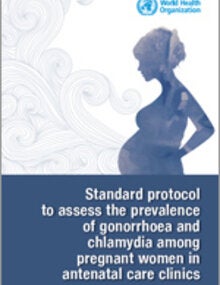Purpose of the protocol
This document has been designed to provide a framework to support local and national STI prevalence studies. The aim of these studies is to understand the burden of disease of Neisseria gonorrhoeae (NG) and Chlamydia trachomatis (CT), two priority STIs that can cause adverse birth outcomes. For this, the objective is to epidemiologically describe the prevalence of these two infections among pregnant women and, by proxy, the general population in the country.
Given the frequently asymptomatic nature of these infections, it is difficult to understand the true burden of disease without conducting prevalence assessments. There is a general lack of data on NG and CT at the local and national levels, and the burden in the general population is frequently unknown. Pregnant women in many cases are used as a proxy for the general population. Chlamydial and gonococcal infections, if left untreated among pregnant women, can lead to serious adverse birth outcomes such as prematurity and low birth weight. Also, because the incidence of these infections is highest among adolescents and young adults, screening efforts have focused on this age group.
This protocol describes a standardized survey methodology and uses a simple, reliable and reproducible study design that can be widely replicated and implemented at the local level.
|

